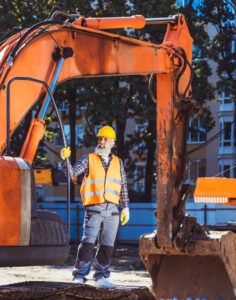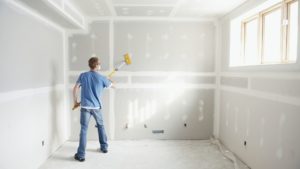1. Call the insurance company
Your home insurance depends on the policies you have. The insurance company assesses and assesses the damage and dispatches an assessor to determine if the damage is indemnified.
Document the value of all possible items and take as many pictures as possible before, during and after cleaning. This is useful if the appraiser can assess the damage.
Note: Not all home insurance covers flood damage. For more information on how flood insurance works, see our blog post.
Safety first after flood!
2. Protect yourself, your device and your valuables
The most important step in a major residential disaster, such as a flood or flood, is to ensure that you and your family are safe. There are several things you can do to stay safe in your home.
Turn off the power
Water and electricity obviously don’t go together. However, if you need to get in or out of a wet place to turn off the power, it is advisable to leave it alone and contact your electrician. Do not re-enter the flood-damaged house until you turn it off.
Please wear protective equipment
Wear protective clothing such as boots and gloves when re-entering the house. This protects you from injuries that can ingest water filled with bacteria.
Protect your valuables
You can lift wooden furniture from parts of the wet carpet and place aluminum foil under your feet to keep the carpet clean. Similarly, remove any possible rugs on the wet floor.
If the flood is severe, you may be forced to leave the house. Make sure you are safe when you go home to deal with the aftermath. Do not drive in flooded areas!
3 Start flood repair immediately
Before you start repairing a flood in a flooded house, you must first record the damage.
This is useful for future insurance claims.
If possible, flood recovery should begin 2448 hours after being allowed to re-enter the house. In many cases, the damage to people and their families is too great. Get the assistance of a repair service to ensure your safety and ensure that the water damage removal process is in place.
Keep in mind that flooring, drywall and insulation may need to be removed to prevent mold and mold from spreading throughout the house. Depending on the degree of flood damage, furniture may need to be dried, cleaned and disposed of. This process should be started as soon as possible, as water and moisture can quickly damage the hardware floor.
4. Dry water damage and remove water
If you start the drying process yourself, be sure to wear protective equipment. Determine what is salvageable and throw away anything that is too damaged or no longer safe to use.
With a lot of standing water, you can start removing it with buckets or plastic tubs. Then use a mop to absorb excess water in hard to reach areas. Go and rent a wetdry vacuum from a local hardware or even grocery store to finish the job once most of the water is gone and let the area ventilate and dry thoroughly.
Using a dehumidifier can help speed up this process. If you have a small amount of water, just use a dry / wet vacuum cleaner from the beginning.
Even after removing all the accumulated water from your house, you still need to take care of wet things, especially if you live in a humid place. If power can be regained, use a central air conditioner to remove the moisture. Floor fans such as air movers and dehumidifiers can also help dry humid areas of your home. Avoid
mold, mold, and other permanent problems that can occur when you rush back inside. You may need the help of a professional restoration company like Jenkins Restorations to secure a dry home.
hours are important, and studies show that if you start drying your home within the first 24 hours and then completely dry your home within 34 days, the risk of mold and mold is almost completely eliminated.
5. Recognize mold
Post-water mold Mold can develop after the first 24 hours of a flood and can be difficult to remove once growth begins. The sooner you remove an item from the water and start drying it, the less likely it is to mold.
If it gets bad, you`ll often have to completely remove the affected areas. It`s always best to err on the side of caution and have a professional assess the situation.
Preventing Mold After Water Damage
As soon as you discover water damage in your home, it`s important to take what measures you can to prevent mold. Be careful that you`re not spreading mold spores throughout your home as you`re attempting to dry things out.
Usually, it`s best to have a professional assist with the drying process, significantly lowering the chances of getting mold.
In the event of mold, our sister company, Jenkins Environmental, can assist you in removing it and restoring your home to a safe and healthy condition.
6. Deciding What Needs To Be Restored After Water Damage
The repair of water damage in your home from flooding is typically what takes the longest amount of time. Flooring and sometimes even walls need to be replaced, broken possessions are often in need of repair, etc. If major construction is needed, make sure you hire an expert!
7. When To Move Back Into Your Home
Once you have the go ahead from your insurance company, your restoration/construction company, and your local government(in the case of natural disasters), it`s time to move back into your clean, dry, mold free home!




